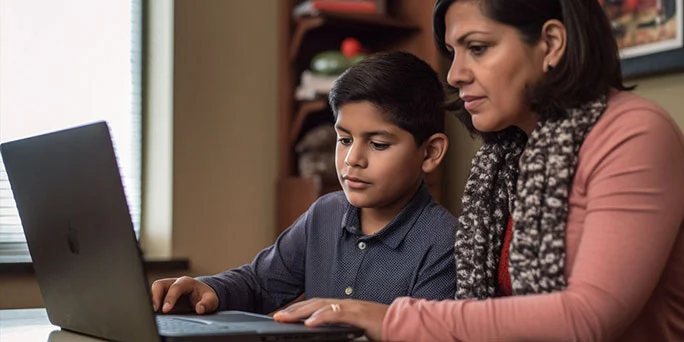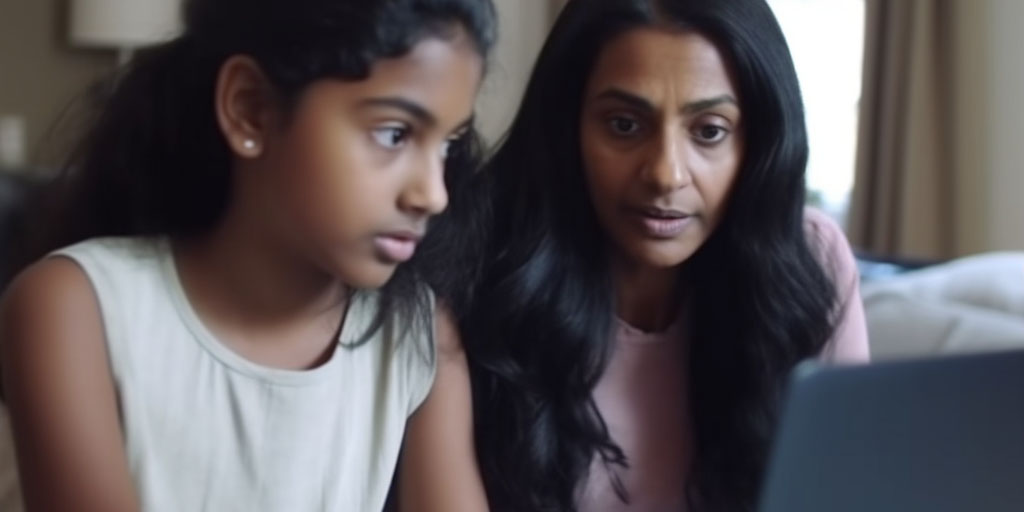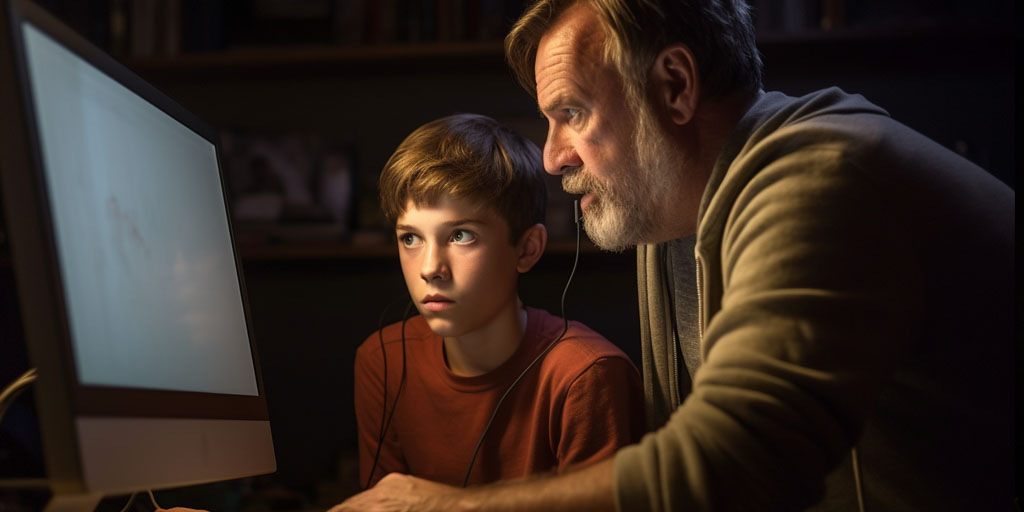
More and more parents are being asked by their kids if they can use ChatGPT. It’s understandable — the revolutionary AI service is everywhere you look these days, and it’s natural that children and especially teens would be curious about it.
OpenAI requires users to be 13 years old to sign up for an account. But you can sign up for an account yourself and use it with younger children.
On one hand, using a service like ChatGPT can offer numerous benefits to your teen or pre-teen, including homework help, learning opportunities, and entertainment. On the other hand, there are also potential risks to consider. Here are some of the pros and cons, recommendations for managing the risks, and advice for talking to your child about your decision.
AI services like ChatGPT can be incredibly beneficial for kids in a number of ways. Here are some examples:
Homework help: If your child is struggling with a particular subject or assignment, they can use AI services like ChatGPT to get quick answers or explanations. This can help them understand the material better and complete their homework more efficiently.
Learning opportunities: AI services can offer children a unique opportunity to learn about new topics or explore their interests. For example, if your child is interested in dinosaurs, they can ask ChatGPT questions about the different types of dinosaurs or their habitats. AI can be helpful for more advanced interests, too: ChatGPT can be especially helpful for kids who want to learn how to code.
Fun: It’s even better for helping them flex their creative muscles, as the fun ways you can use ChatGPT are seemingly endless. Your kid can ask ChatGPT to tell them a joke, tell them a funny story, and even brainstorm what would happen if dinosaurs could talk.
Communication skills: AI chatbots perform best when the prompts are clear and direct. So, chatting with an AI service can help children develop their ability to ask questions, express themselves clearly, and listen to others.
Life skills: By the time your kids graduate from high school, the ability to work and communicate with AI platforms will be an essential skill for many in college and in the workplace. From crafting ChatGPT prompts to generate research paper topics to using one of the many AI platforms to write or check code, giving your kids access to AI services now will give them a head start on learning this crucial skill.

As a new and relatively unknown technology, there are obviously potential risks to letting your child use AI tools like ChatGPT.
Dependence: If your child becomes too reliant on AI services, they may not develop important critical thinking and problem-solving skills. AI is a tool, but it isn’t a replacement for developing essential skills like the ability to develop a strong argument or research an important topic.
Privacy concerns: AI services may collect personal information about your child, such as their name, age, and location. This information could be used for targeted advertising or other purposes.
Inappropriate content: Some AI services may not filter out inappropriate content, such as explicit language or violent images. This could be harmful or upsetting to your child.
Safety risks: In rare cases, AI services could pose a safety risk if they give your child dangerous or inaccurate information.
Plagiarism: Your kid could be tempted to pass off the output they get from ChatGPT as their own. Make sure your kids understand that it’s not OK to present information from this tool as their own work, especially for homework. Most schools have a zero-tolerance policy for plagiarism and consider it cheating. It’s important to talk to your child about the importance of using ChatGPT as a thought-starter, not as a replacement for their work.
You can minimize the potential downsides while letting your child use ChatGPT by talking to your child and staying connected to how they’re using AI.
Monitor your child's usage: Use the service alongside your child, at least initially. Keep an eye on how often your child is using AI services and what they're using them for. Let your child know what the rules are for using AI services, and add them to your family’s digital device contract. Set limits if necessary, including when and how often they can use them — especially as it relates to schoolwork.
Talk to your child about privacy: Explain to your child the importance of protecting their personal information and encourage them to be cautious about what they share online.
Encourage critical thinking: Remind your child that AI services are not always 100% accurate, and encourage them to think critically about the information they receive. Explain the importance of checking the credibility of a source before trusting the information. For example, you could teach your kids how to ask ChatGPT for sources when it provides answers. Then, have them manually check that the sources are being accurately cited.
Stay involved: Continue to be involved in your child's education and offer them support and guidance when they need it. Encourage your child to ask questions about AI services and how they work, and to come to you if they get answers from ChatGPT that they don’t understand.

You must be 18 years old to create an account with OpenAI to use ChatGPT. But you can create an account for yourself and use it with your child.
You’ll have access to ChatGPT 3.5 by default; if you want access to the more powerful ChatGPT 4, you’ll have to become a ChatGPT Plus user for a monthly fee (currently $22/month). ChatGPT 3.5 should be sufficient for you and your child to do casual queries, if you just want to get a feel for the technology.
If you’re concerned about giving your child access to ChatGPT, there are some AI services that are explicitly kid-friendly. Here are a few:
Allowing your child to use AI services like ChatGPT is more a matter of “when” and “how” than “if,” given the way it’s changing work and school. As a parent, you can choose the best time to introduce your child to AI, and how to do it in a way that maximizes the benefits and manages the risks.